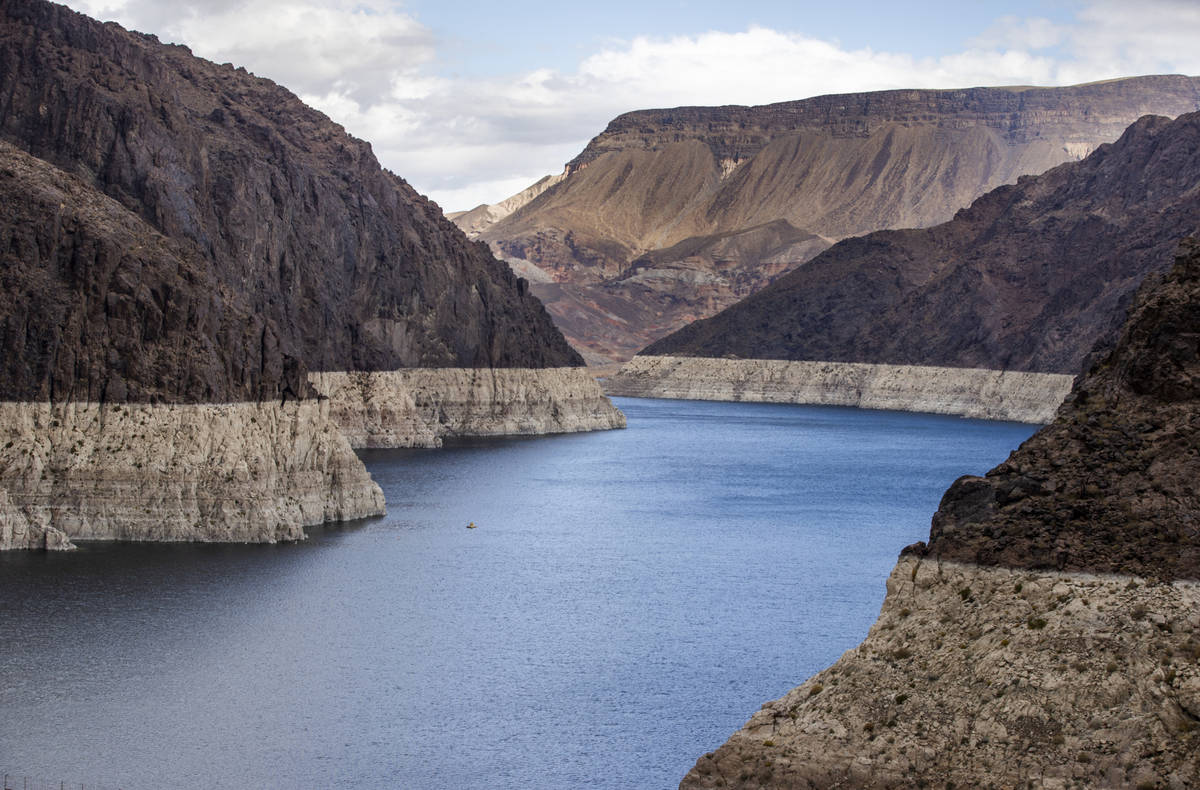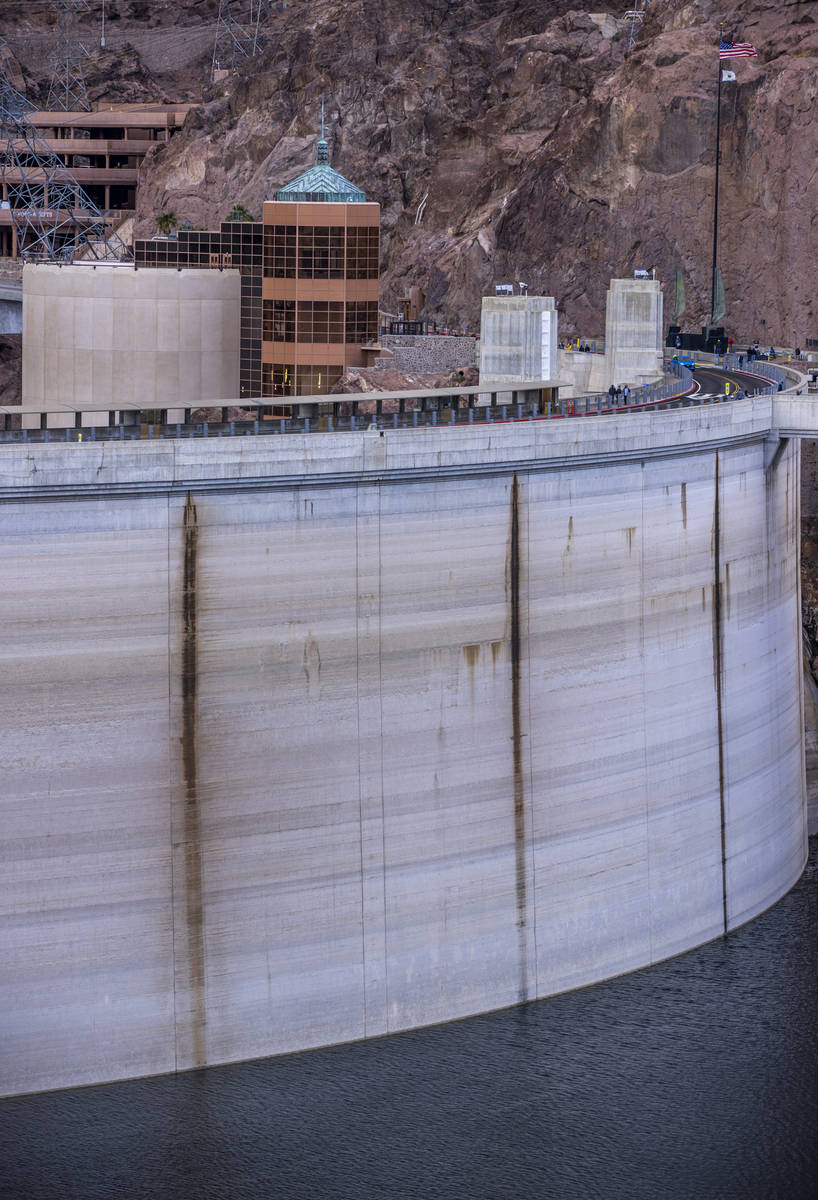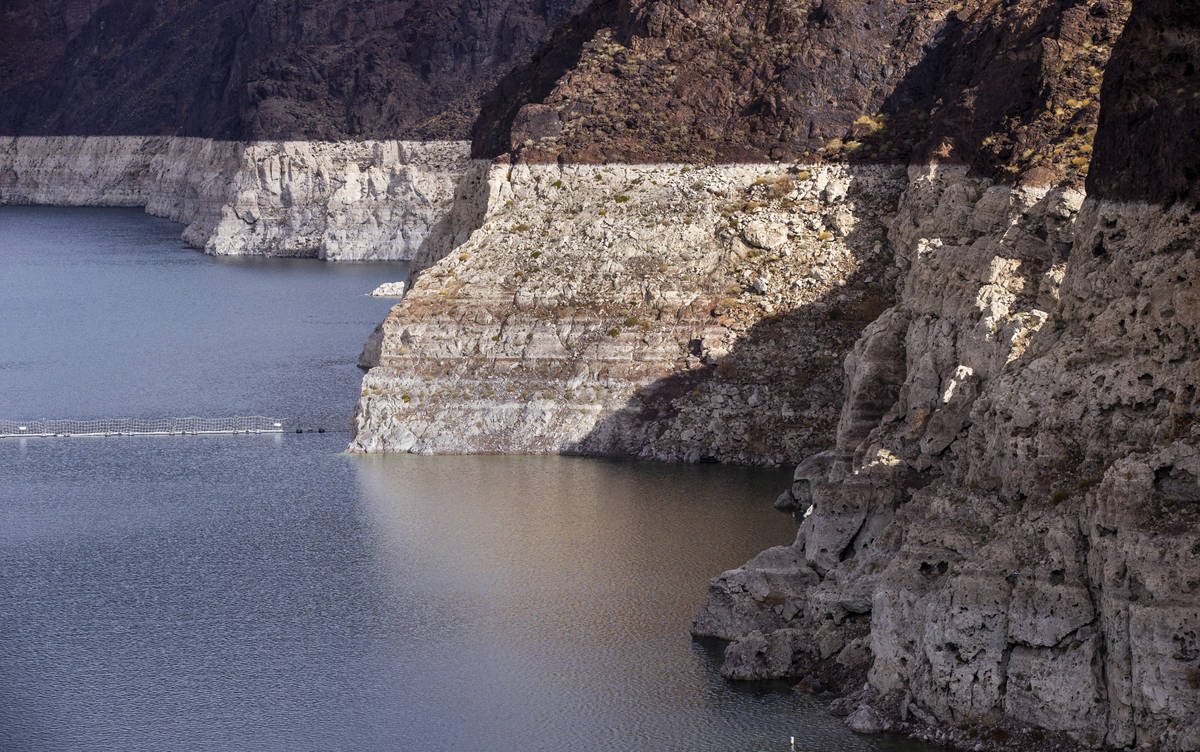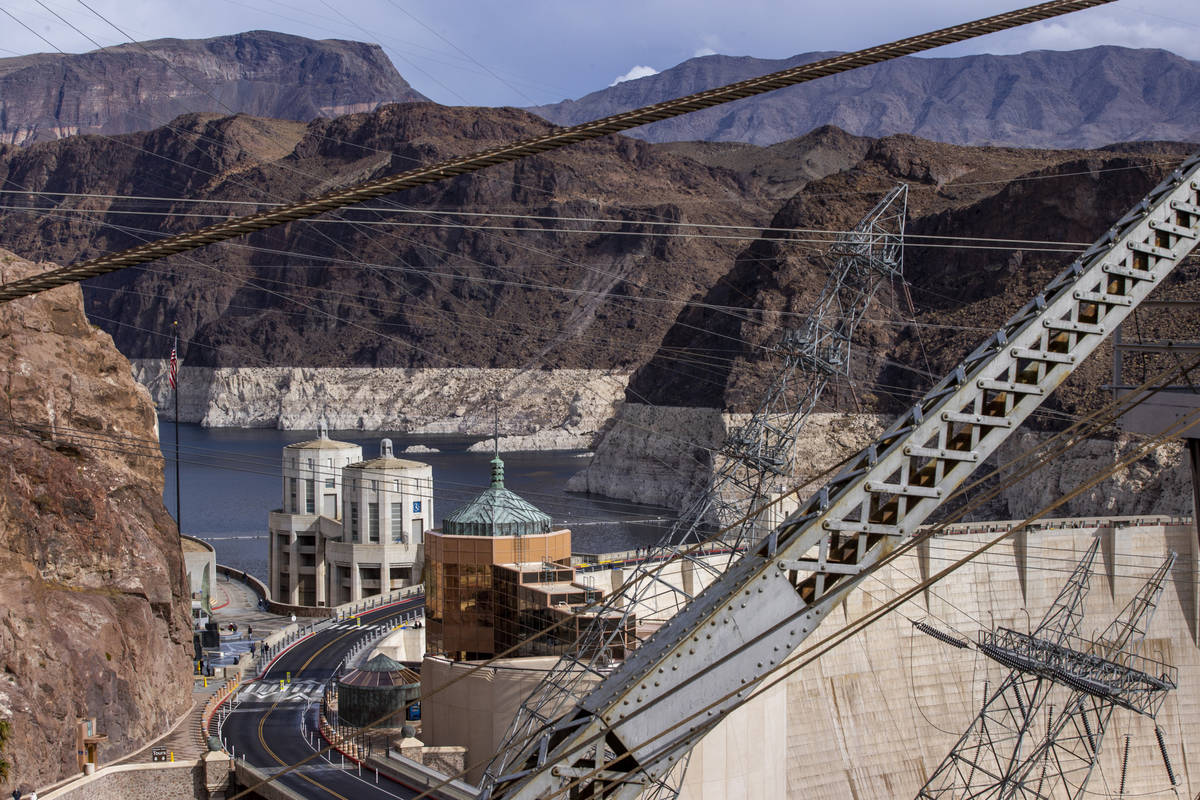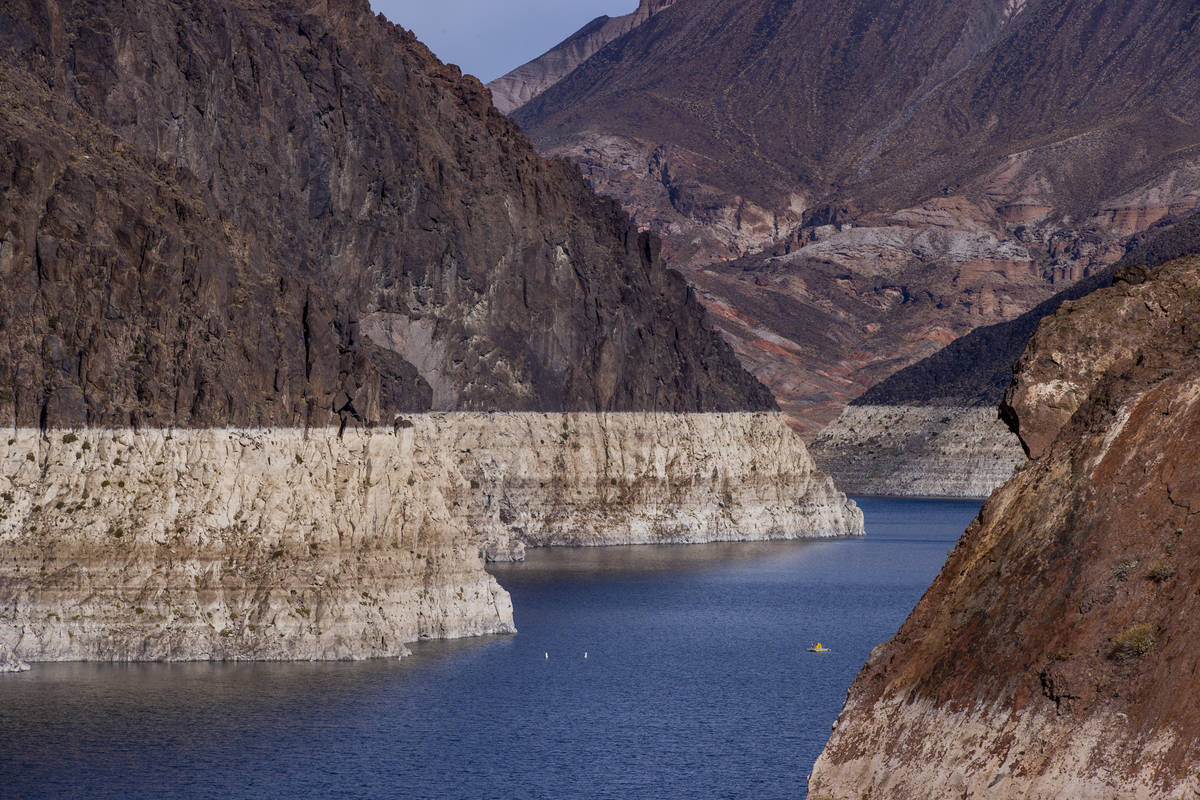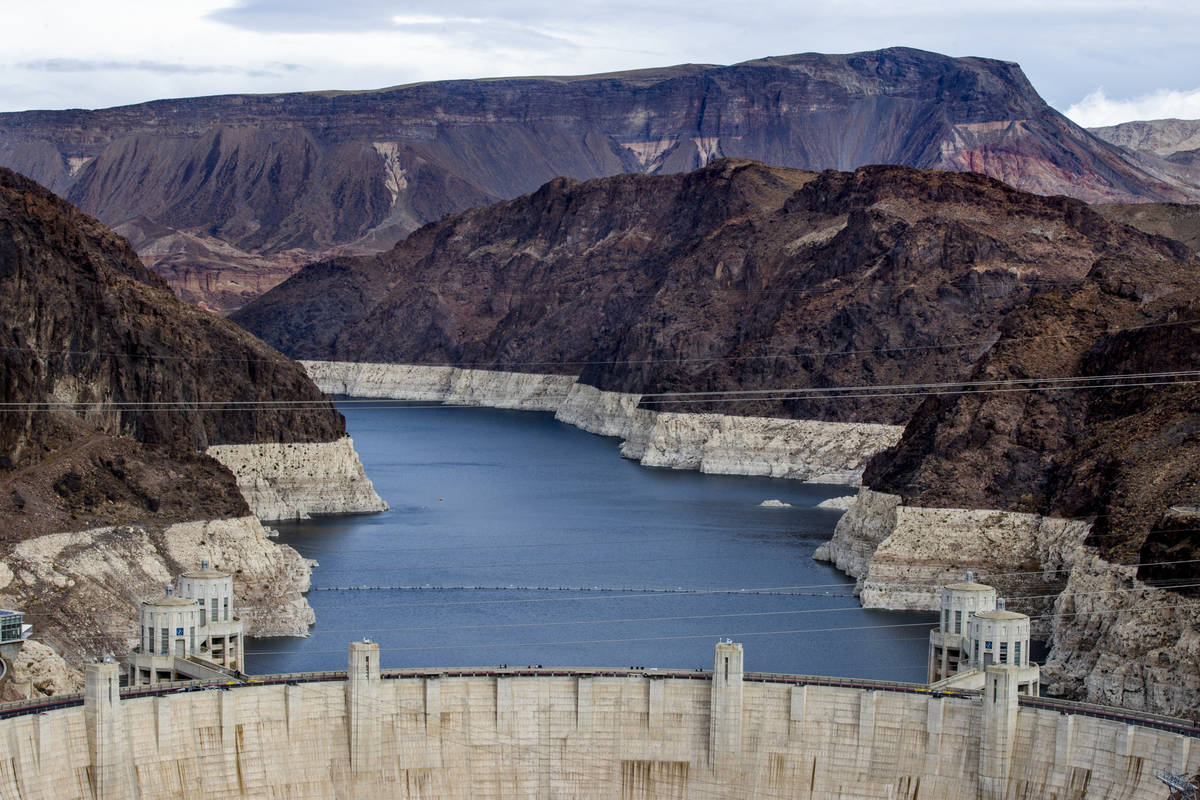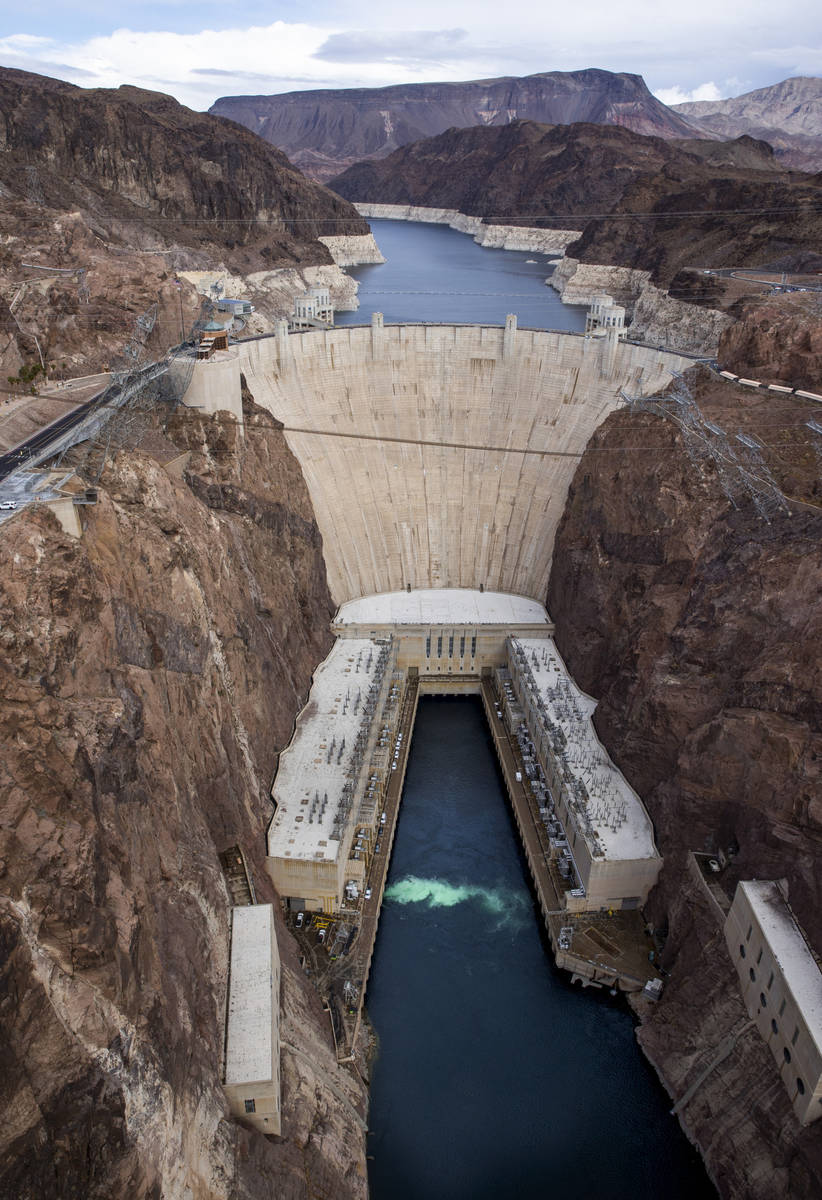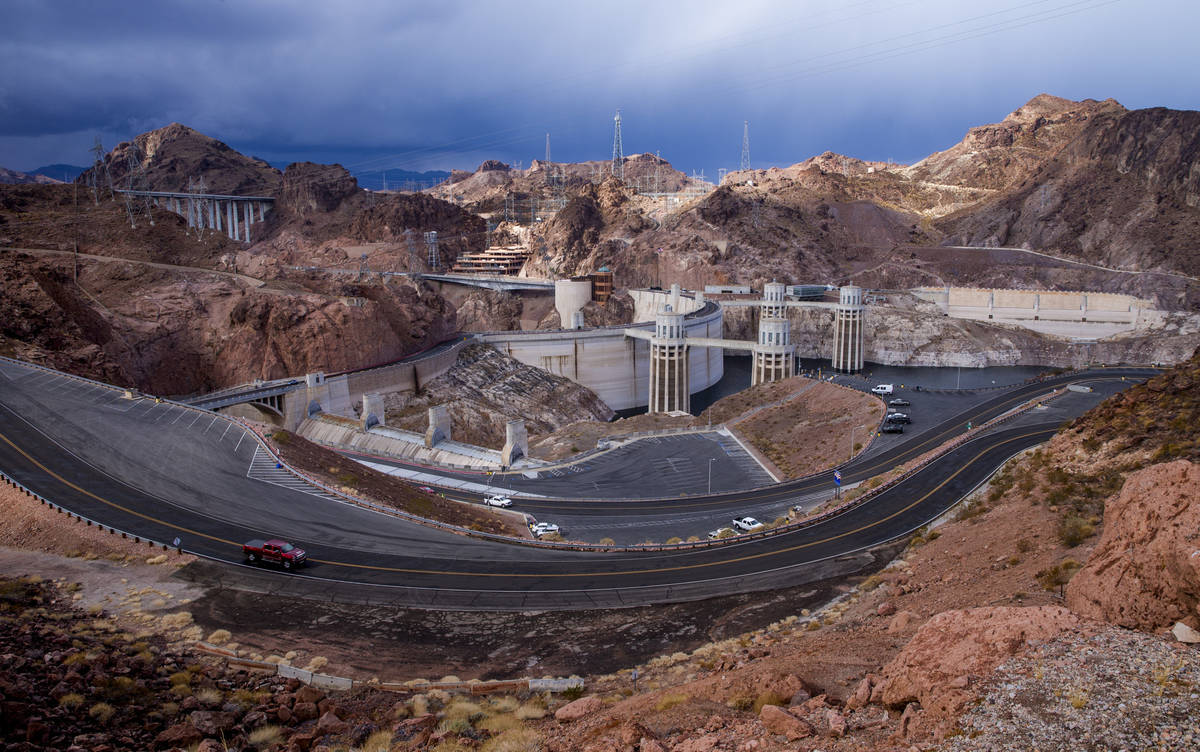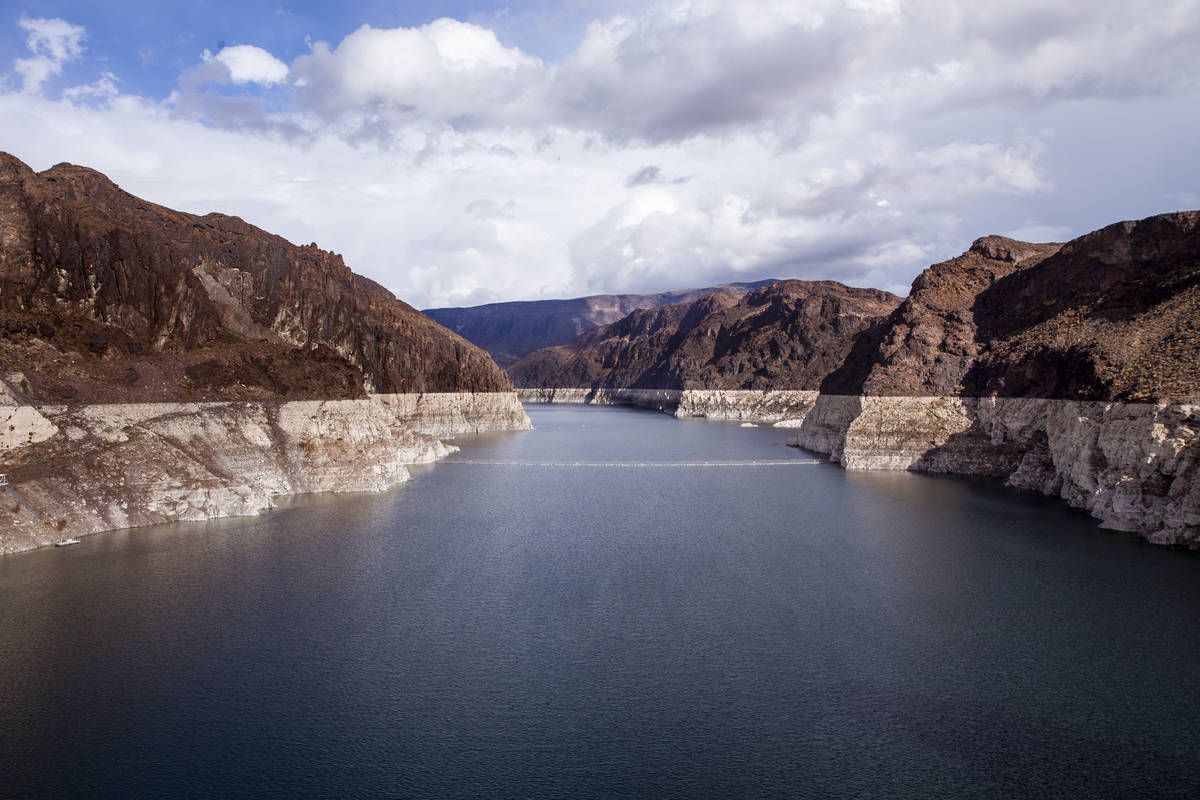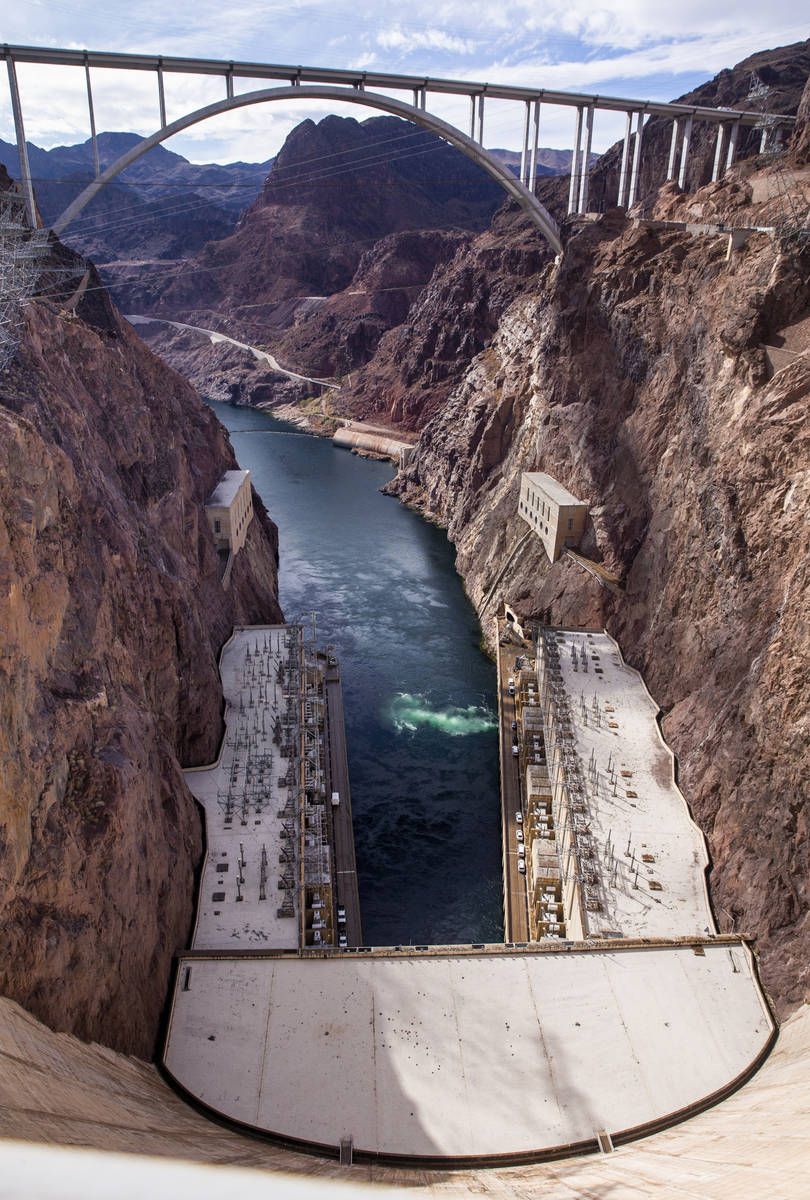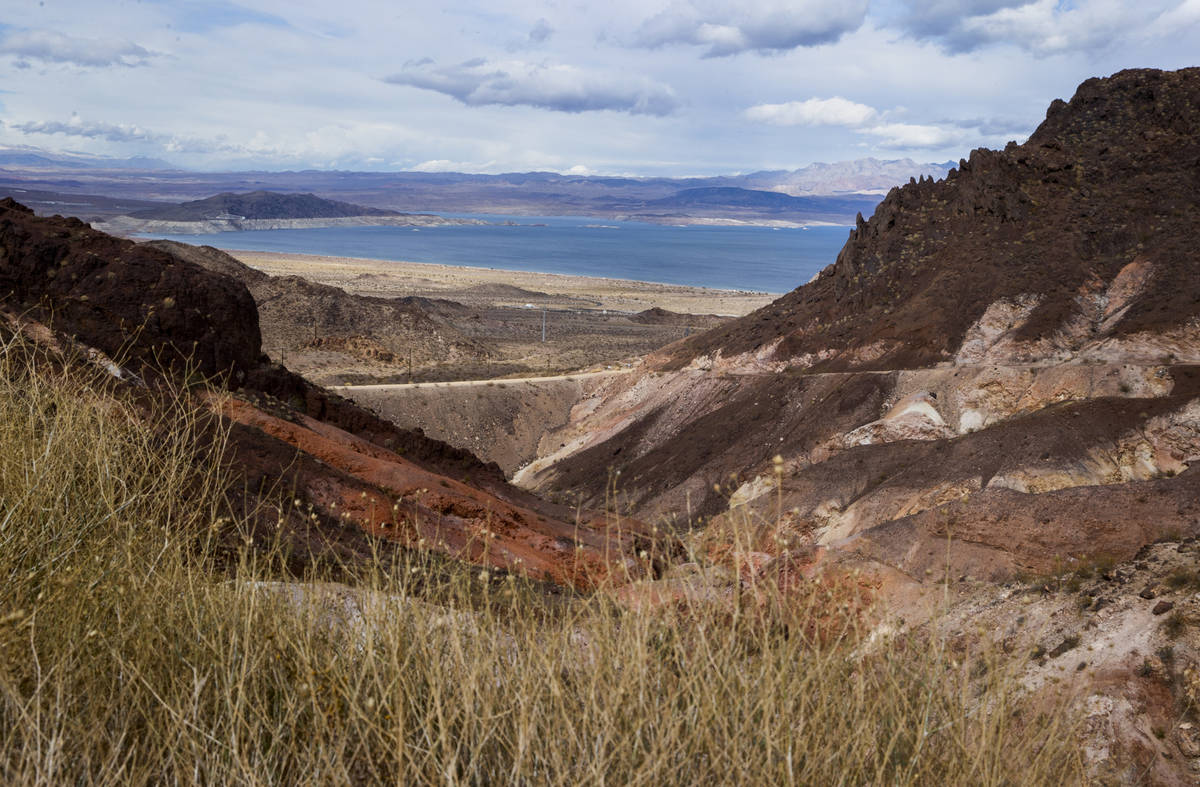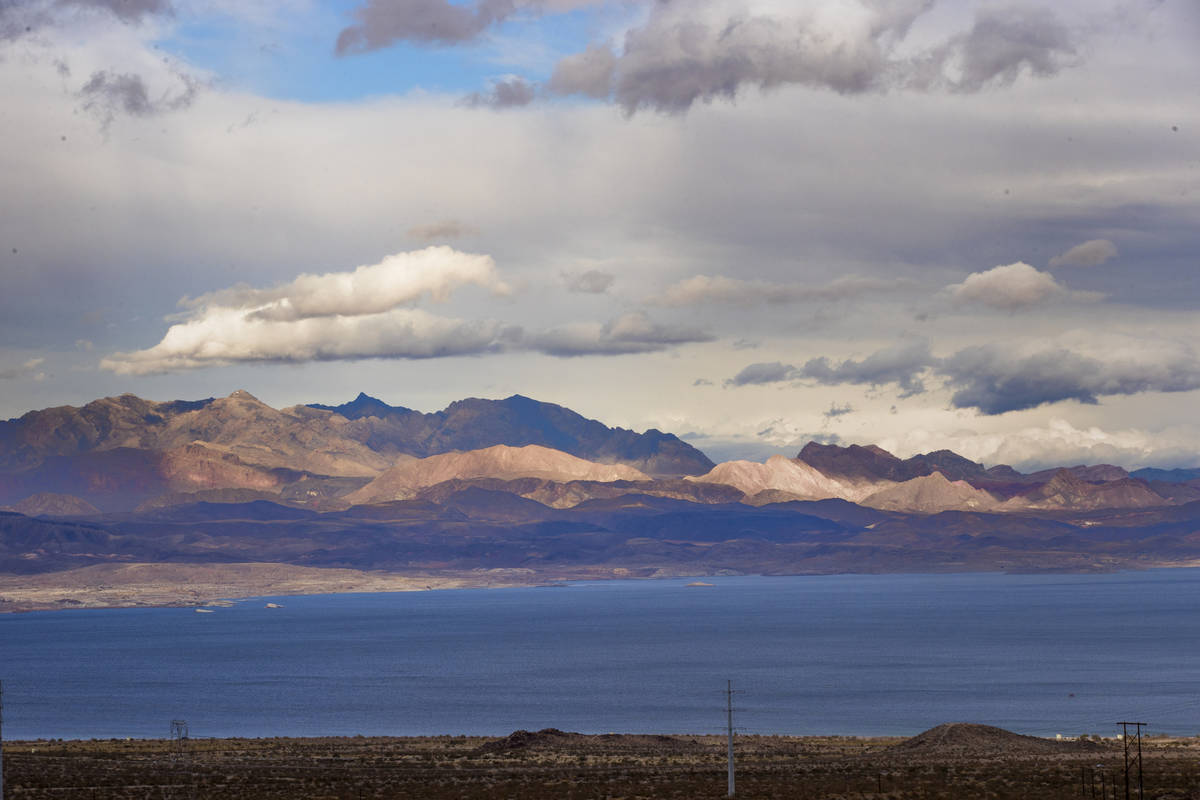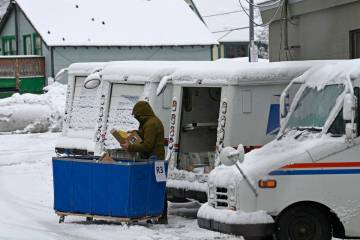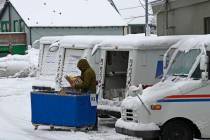Shrinking Lake Mead inches closer to water shortage declaration
Projections from the U.S. Bureau of Reclamation show Lake Mead is in danger of dropping low enough to trigger its first federally declared water shortage next year.
A study this month from the Bureau of Reclamation, based on the most probable inflow, shows Lake Mead, now at 1,085 feet, could end the year below 1,070 feet.
If projections in August show the lake level dropping below 1,075 feet at that time, a federal shortage will be declared.
“I think we are as close as we’ve ever been to seeing that determination,” said Colby Pellegrino, deputy general manager of resources for the Southern Nevada Water Authority.
The study, underscoring the effects of a decades-long drought, prompted the water authority on Thursday to remind residents of the importance of conservation.
That means fixing leaks, setting water clocks, fixing sprinklers that spray into the street and getting rid of unnecessary grass.
“Those little things do make a really big difference in our overall water usage,” Pellegrino said.
It’s still possible that a water shortage could be avoided through a combination of an abundance of wintry weather in the Rockies and conservation.
And even if there is a declaration, Pellegrino said, Southern Nevadans need not be overly concerned.
A shortage would reduce Southern Nevada’s allocation of 300,000 acre-feet of water from the Colorado River by 13,000 acre-feet. That would still leave it with more available water than the approximately 250,000 acre-feet the region consumed last year, according to the water authority.
One acre-foot of water is about what two Las Vegas Valley homes use over the course of 16 months.
The forced cut in allocation under a federally declared shortage would come in addition to an 8,000 acre-foot contribution Nevada agreed to in 2019 if the water level in Lake Mead fell below 1,090 feet, as it has.
About 90 percent of Southern Nevada’s water comes from Lake Mead.
Dry conditions, little snow
Projections of lower water levels in Lake Mead are in part due to projections that the Colorado River will experience a significantly lower-than-average flow of melted snow from the Colorado Rockies this year.
As of Monday, the snowpack that eventually flows into the Colorado River was 28 percent below average, according to a report from the Bureau of Reclamation.
“Right now things are looking pretty bad,” said Warren Turkett, a natural resource analyst for the Colorado River Commission of Nevada. “It’s been really dry.”
A below-average snowpack, coupled with dry conditions, means runoff from the Rockies into the river is expected to be about 53 percent of average, he said.
Dry soil acts like a sponge, soaking up runoff before it can flow into the river.
Last year, the Rockies had an above-average snowpack, but dry conditions resulted in a runoff that was only about 54 percent of average, Turkett said.
Since 2000, the first year of the drought, there have been 16 years when runoff into the Colorado River was below the historic average, he said.
So far this water year the upper basin of the Colorado River has only experienced 64 percent of average precipitation.
“Last summer was incredibly dry and hot as well, so the ground really dried out prior to this water year,” Turkett said. Water years run from October to September.
Still, Turkett said, a lot can happen between now and when runoff season begins, usually in April.
Upstream impact
Recently released projections initiated a provision in an agreement between upper Colorado River Basin states that will require representatives to meet with the federal government for enhanced monitoring of the water levels in Lake Powell.
Those projections, based on the minimum probable inflow from the river, show Lake Powell’s water level dropping below 3,525 feet — approaching a critical level for the lake — in 2022.
If the water level falls below 3,490, the Glen Canyon Dam, a major power source for the West, will have its ability to generate hydropower reduced.
“So we don’t want to get close to that,” said Malcolm Wilson, who leads the water resources group in the upper Colorado River Basin region for the Bureau of Reclamation. The first meeting is likely to be held next month.
The first step is to increase monitoring and communication with the upper basin states, Wilson said.
Should the projections of the most probable inflow from the river show that Lake Powell will drop below 3,525 feet within two years of the study, Wilson said, officials will develop a plan to move water to Lake Powell from the Flaming Gorge Reservoir at the border of Utah and Wyoming, Navajo Lake in New Mexico, and the Aspinall Unit, a water storage unit in Colorado comprising three reservoirs.
Keeping Lake Powell at a healthy level is important to Nevada.
“Powell needs to be able to sustain its commitment of releases to the lower basin for Mead to be able to sustain its ability to serve folks,” Wilson said.
A previous version of this article incorrectly characterized the scenario under which the lake would trigger a federal water shortage declaration. It is the most probable scenario.
Contact Blake Apgar at bapgar@reviewjournal.com or 702-387-5298. Follow @blakeapgar on Twitter.



